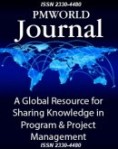 I have used the term ‘stakeholder theory’ in a couple of recent posts on this blog without taking the time to explain what it is.
I have used the term ‘stakeholder theory’ in a couple of recent posts on this blog without taking the time to explain what it is.
‘Stakeholder theory’ is a particular approach to recognising and dealing with stakeholders, based on the concept of stakeholder developed by Ed Freeman in his 1984 books Strategic Management: a Stakeholder Approach (1984), and Stakeholder Theory: The State of the Art (2010). These ideas a central to the stakeholder management approach embedded in the Stakeholder Circle methodology.
The way in which organisations approach stakeholders, the tools and techniques used to engage stakeholders and at a philosophical level, the purpose of the organisation are all built on the view of stakeholders accepted by the organisation’s governing body. The traditionalist / Friedman view of stakeholders focused on the ‘owners’ of the organisation (in the commercial world shareholders) and a narrow focus on maximising profits. A range of public relations and physical disasters highlight the short term, self-defeating outcomes from this approach.
Stakeholder theory poses the deeper philosophical question: ‘can business leaders make decisions about the conduct of the business without considering the impact of these decisions on (all) those who will be affected by the decisions? Is it possible to separate ‘business’ decisions from the ethical considerations of their impact? I suggest ‘not’. It is not possible to build a sustainable organisation of any type, including a profitable business, if the organisation fails to meet the needs of most (if not all) of its stakeholders.
 R Edward (Ed) Freeman is considered to be one of the early proponents of this wider view of organisational stakeholders, writing that they could be defined as “any group or individual who can affect or is affected by the achievement of the organisation’s objectives”. This broad view has been accepted by many other institutions, for example, the current PMBOK® Guide glossary defines stakeholders as: “Stakeholders are individuals, groups, or organisations who may affect, be affected by, or perceive themselves to be affected by a decision, activity, or outcome of a project, program, or portfolio”.
R Edward (Ed) Freeman is considered to be one of the early proponents of this wider view of organisational stakeholders, writing that they could be defined as “any group or individual who can affect or is affected by the achievement of the organisation’s objectives”. This broad view has been accepted by many other institutions, for example, the current PMBOK® Guide glossary defines stakeholders as: “Stakeholders are individuals, groups, or organisations who may affect, be affected by, or perceive themselves to be affected by a decision, activity, or outcome of a project, program, or portfolio”.
Freeman, Harrison, Wicks, Parmar, & deColle, in their 2010 book trace the evolution of stakeholder theory from 1984 when was originally associated with the idea of business as being concerned with value creation and trade to the current times.
In 1984, economics assumed that ‘values and ethics’ did not need to be considered in economic theory. The limitations of this approach can be questions in a number of ways:
- Can we really divide the world into ‘business realm’ and ‘ethical realm’?
- Can business executives ‘do the right thing’: can they separate the ‘business’ decisions they make from the impacts of these decisions on everyone else (stakeholders)?
- How can we combine ‘business’ and ‘ethics’ conceptually and practically?
Freeman et al. describe the artificial separation of business decisions and considerations of their impact as the ‘separation fallacy’, rejecting it by stating there can be no such thing as ‘value free economics’: “it makes no sense to talk about business or ethics without talking about human beings. Business is conducted by human beings, decisions are made by human beings, the purpose of the value creation and trade is for the benefit of human beings”. If business is separated from ethics there can be no moral responsibility for business decisions.
The starting point for a better approach to stakeholders is that “most people, most of the time, want to, and do, accept responsibility for the effects of their actions on others”. What this means is that:
- People engaged in value creation and trade (in business) are responsible precisely to “those groups and individuals who can affect or be affected by their actions”.
- This means at least: customers, employees, suppliers, communities and financiers (shareholders). And importantly, no one group can expect to profit at the expense of others over a sustained period – everyone benefits or ultimately no one benefits.
Stakeholder theory, then, is fundamentally a theory about how business can work at its best. It is descriptive, prescriptive and instrumental at the same time. Stakeholder theory is more than just considering value for shareholders – it is more complex, because there are many relationships involved. For any organisational activity there will be a complex web of human beings with their needs and wants (stakes).
In answering the question ‘what makes business successful’? Freeman refutes Milton Friedman’s article in the New York Times (1970) which stated that for businesses to become successful they must focus on maximizing profits – a focus on shareholders and ‘shareholder value’. However, to maximize profits there must also exist:
- Products and services that customers want,
- Good relationships with suppliers to keep operations at cutting edge,
- Inspired employees to stand for the company’s mission and push it to become better,
- Supportive communities to allow the company to flourish.
A focus on shareholders is counterproductive because it takes away focus on fundamental driver to value – stakeholder relationships. The only way to maximize profits sustainably it to satisfy all stakeholders.
Instead of the flawed shareholder value paradigm, developing a ‘stakeholder mindset’ in organisations and by extension in projects and programs is a better way to maximize profits, where:
- Business is a set of relationships among groups which have a stake in the activities that make up the business.
- Business is about how customers, suppliers, employees, financiers (stockholders, bondholders and banks), communities and managers interact and create value.
- To understand business is to know how these relationships work.
- The executive’s job is to manage and shape these relationships.
Within this framework the stakes that stakeholders have will include:
- Owners or financiers (shareholders) have a financial stake in the business in the form of stocks, bonds – they expect a financial return.
- Employees have their jobs and their livelihood at stake: They may have specialised skills for which there is only a small market – in return for their labour they expect security, wages and benefits and meaningful work.
- Customers and suppliers exchange resources for the products and services of the firm. They expect to receive in return the benefits of the products and services – these relationships are enmeshed in the practice of ethics in business.
- The local community grants the organisation the right to build facilities within its boundaries. The community benefits from taxes and the economic and social contributions of the organisation back into the community.
These relationships are interdependent and require balanced decision making:
- The organisation will not be profitable unless is employees and suppliers work constructively to make goods or services the customers are prepared to buy.
- The organisation has to pay sufficient money and create a culture that attracts the right type of employee, but if employees take too much out of the organisation in the form of excessive pay, the organisation becomes uncompetitive and the employees lose their jobs.
- Organisations are expected to be good citizens – not to expose the community to unreasonable hazards in the form of pollution, toxic waste or substandard goods or services. But the community benefits from consuming the goods and services and it is impossibly to create things without some pollution.
The art of managing within stakeholder theory is to find ways to minimise the damage and maximise the benefits accrued by each of the stakeholder groups. This is a creative process and management teams that do it best create the most successful organisations.
There is great value to be gained in examining how the stakes of each stakeholder or stakeholder group contribute, positively or negatively, to the value creation process of a business; and what the role of the executive is in stakeholder relationship management. In this context stakeholders are defined:
- Narrow: those groups without whose support the business would cease to be viable: categorized as ‘primary’ by Freeman and ‘Key stakeholders’ in mine. Such thinking was also the basis of the categorization of stakeholders as ‘legitimate’ and ‘salient’ (Mitchell, Agle, & Wood, 1997), leading to a risky viewpoint that only the ‘important primary’ stakeholders matter.
- Wider: those who can affect the business, or be affected by its activities categorized as secondary or instrumental (a means to an end).
The stakeholder approach preferred by Freeman is this: Executives need to understand that business is fully situated in the realms of human beings; stakeholders have names and faces and children AND they are not placeholders for social roles.
Stakeholder theory must address:
- Understanding and managing a business in the 21st century – the problem of an organisation’s value creation and profitable trade.
- Combining thinking about ethics, responsibility, and sustainability with the current economic view that the organisations that operate within a capitalist framework must ‘maximise shareholder value’ – the problem of the ethics of capitalism.
- Dealing with the paradox that an over emphasis on creating shareholder value will destroy shareholder value.
Shareholder value is a component of stakeholder value, organisations that innovate and create great stakeholder value, will also drive shareholder value. And the first step in creating stakeholder value is understanding your stakeholders, their attitudes and their expectations. The Stakeholder circle® tools have been designed to help you resolving this problem!
 Preventing or minimising client induced delay is a common issue from small ‘agile’ IT developments through to multi-$billion mega projects. Whilst this type of delay can never be completely eliminated, they can be reduced by applying a pragmatic six stage approach.
Preventing or minimising client induced delay is a common issue from small ‘agile’ IT developments through to multi-$billion mega projects. Whilst this type of delay can never be completely eliminated, they can be reduced by applying a pragmatic six stage approach.






